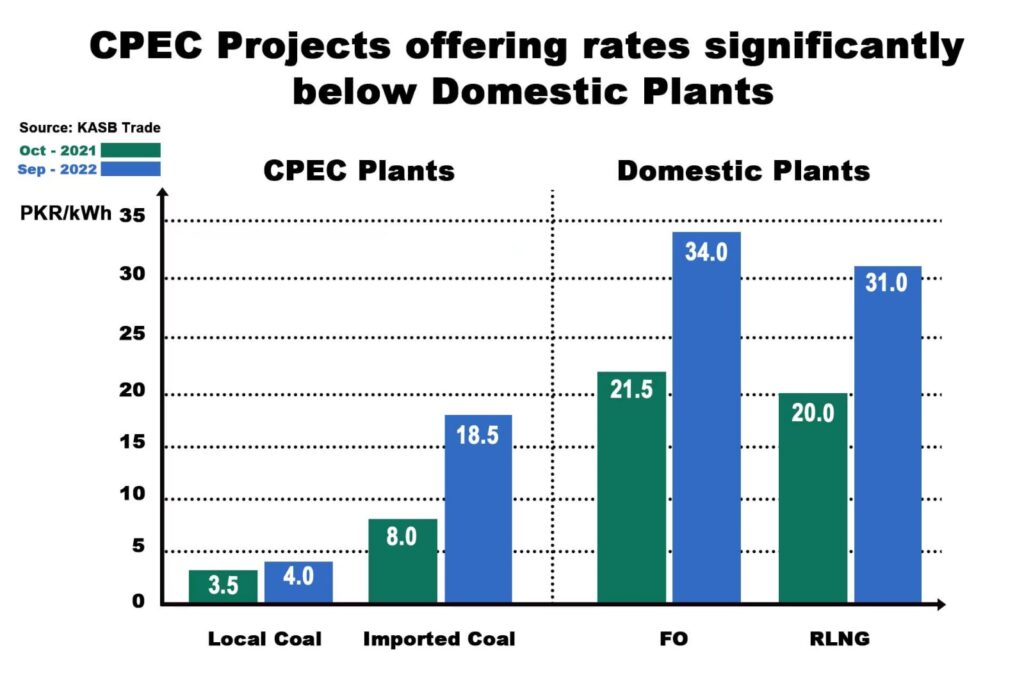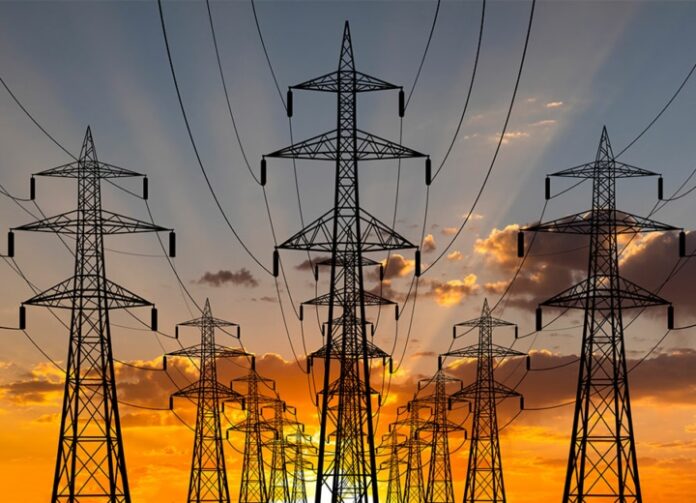“CPEC energy projects have improved the power industry in Pakistan and contributed to economic growth by increasing power supply with high efficiency at lower cost,” Mr. Tauseef H. Farooqi, Chairman National Electric Power Regulatory Authority (NEPRA) said.
According to the Chairman, the total installed capacity of CPEC energy projects, including that of coal, wind, solar and hydro power, stands at 6570 MW. They have generated 28549.94 Gwh and 25772.48 Gwh power respectively in FY2020-21 and FY2021-22, accounting for 22.03% and 18.37% of the total generation in Pakistan.
The average 20% annual addition to the national grid has alleviated rampant cases of load shedding within the country and especially powered the export-oriented industries in Pakistan.

Higher Efficiency on Power Generation
Pakistan’s energy sector is mainly dependent on imported fuel (oil and LNG), which has caused a heavy burden on foreign reserves and confined industrial development of the country.
“As the CPEC energy projects replaced the costlier energy production from furnace oil and diesel to coal and renewable energy resources in the last five years, the energy needs of Pakistan has been fufilled at lower prices, driving growth in the export-oriented industries”, the Chairman revealed.
Regarding the power generation cost, in October 2021, CPEC projects based on imported coal produced electricity at Rs.8.0/kWh. While the cost of domestic projects based on FO and RLNG were Rs.21.5/kWh and Rs.20.0/kWh respectively, twice more expensive than CPEC projects, data provided by KASB Trade shows.
The cost has been rising over the last year due to surged fuel prices in the international market. Nevertheless, the CPEC projects still provide competitive rates. In October this year, power generation cost of CPEC projects based on imported coal was Rs.18.5/kWh, and that of domestic projects based on FO and RLNG was Rs.34.0/kWh, Rs.31.0/kWh.
When it comes to electricity rate, the chairman told CEN, CPEC projects (EPP) based on coal is Rs.22.13/kWh on average, and that of non-CPEC projects based on oil is Rs.36.61/kWh. This shows the CPEC energy projects, utilizing fuel with higher efficiency, are providing affordable electricity to millions of Pakistani households.
Utilization of Thar Coal
Rising fuel prices and a new energy landscape after the Ukrain war necessitates Pakistan to avail of its indigenous resources, and at the time being, the most efficient solution is Thar coal.
Data provided by NEPRA shows that proven coal reserves in Thar are approximately 175 billion tons. After the commissioning of phase II of Block II, the daily coal production is approximately 24,000 tons, sufficient to fire 1320 MWs. Based on current coal prices of South African Coal, the fuel saving is approximately Rs. 13.46/kWh and the annual fuel savings for 1320 MW will be approximately Rs. 121 billion from Thar coal.
CPEC projects have enabled Pakistan to utilize the Thar coal and produce electricity at around Rs.7-7.5/kWh, the report says. Currently, the 660 MW Engro Power Thar Limited, Lucky Electric, Engro Powergen Thar and Thar Energy are completely or partialy running on Thar coal.
On top of that, another 1,320 MW Shanghai Electric coal power plant, together with an open-pit coal mine of 7.8m tons capacity in Thar Coal Block-1, has been completed recently and is in the process of synchronizing with the national grid. Once put into commercial operation, it will help double electricity generation based on Thar coal to 2640 MW and lower average electricity costs in Pakistan.
Transit to Renewable energies
In December 2020, Pakistan announced that it would not build any new power projects that depend on imported coal, and pledged that by 2030, 60pc of its energy will come from clean and renewable sources. This coincided with China’s commitment of building a green CPEC, which entails not building new coal-fired power plants overseas, and increasing support for low-carbon energy.
In this connection, four hydro power projects have been completed or in development under the CPEC Framework, including the biggest run of the river hydro power project 720 MW Karot HPP commissioned on 29th June 2022, 840 MW Suki Kinari HPP under construction, and a 640 MW project recently approved in Mahl.
According to the State of Industry Report 2022 issued by NEPRA, the HPPs have a comparatively long operational life which can be used as an advantage for reducing their tariff through a large spread of the cost over the life of the project.
Besides, CPEC projects have invigorated the once barren land in Jhimpir and transformed the region into a ‘wind corridor’ in real. Four wind farms built here with a total installed capacity of 300 MW have supplied economical and clean energy to national grid of Pakistan.
In Bahawalpur located the first ever solar power plant in Pakistan Quaid-e-Azam Solar Park. The plant was initially launched with a capacity of generating 100 MW of power. Since 2015, there have been addition of 300 MW power generation capacity, and there are numerous planned projects reported for the Quaid-e-Azam Solar Park by AEDB with cumulative capacity of 1,050 MW.
The State of Industry Report 2022 by NEPRA shows the price of electricity from wind and solar power plants are less than half of the price of electricity currently being procured from thermal sources.


